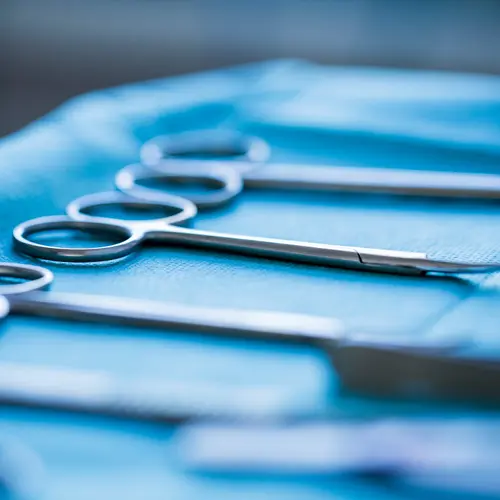A panniculectomy is a surgical procedure to remove excess hanging skin and fat called a pannus or “apron” from the lower abdomen after a big weight loss.
A panniculectomy isn’t a tummy tuck (abdominoplasty), a procedure done for cosmetic and aesthetic reasons. Instead, it’s a surgery done to remove hanging skin that may cover your thighs and genitals to improve your health and appearance.
Why do Panniculectomy Surgery?
Because of bariatric surgery or other drastic weight loss methods, you may need panniculectomy surgery to remove excess skin. The excess skin can hang over your back, thighs, genital area, and extend as low as your knees, interfering with your daily activities such as, walking, standing, and sitting.
To avoid serious health problems, such as skin infections, back problems (due to weight and posture issues), rashes due to chafing, ulcers, and abscesses, you may need to undergo panniculectomy surgery.
You are a candidate for Panniculectomy if:
- You are not suffering from uncontrolled cardiac disease, lung disease, or diabetes.
- You are a nonsmoker as cigarettes affect blood supply and wound healing.
- You are in good health but have overhanging skin that is interfering with your daily activities.
- Your weight has been stable for more than 6 months.
- You have medical symptoms from your excess abdominal apron or persistent rashes or infections underneath the hanging fold of skin.
Complications and Risk of Panniculectomy Surgery
To undergo panniculectomy surgery requires you to weigh the benefits of the procedure and the risks involved. Some of the risks are:
- Anesthesia risks such as reaction to medicines, breathing problems, bleeding, blood clots, or infection
- Fluid buildup under the skin (seroma)
- Poor healing of the skin
- Skin loss and scarring
- Tissue death
- Prolonged swelling
- Nerve damage that may cause changes to the sense of touch on your skin
- Constant pain
- Your skin may loosen again and you may have to redo the surgery
- Skin discoloration
- Infection
Preparing for Panniculectomy Procedure
When preparing for panniculectomy surgery:
Be open about your medical history to your surgeon. Let them know if you are taking any prescription or over-the-counter medicines.
Beware of certain medications. Your surgeon can suggest that you avoid taking herbal supplements and anti-inflammatory drugs, which may increase bleeding and make it hard for your blood to clot.
Avoid smoking. If you do, your surgeon may ask you to stop smoking to increase your chances of healing fast as smoking slows down wound healing.
Performing the Procedure
The procedure involves:
Anesthesia. You will receive intravenous or general anesthesia to ensure that you are asleep, at ease, and don’t feel pain during the procedure. Your surgeon will suggest the best choice for you.
Incision. Your surgeon will cut an incision from under your breastbone to just above your pelvic bone.
Closing the incisions. In your lower belly, just above the pubic area, your surgeon will cut you horizontally depending on the amount of overhanging skin. In some instances, a vertical incision is necessary for persons who have excess skin in the transverse dimension.
After the incision, the surgeon will remove the excess skin and fat, and close your cut by stitching the skin together. The procedure might require small tubes called drains, inserted to allow blood or fluids that may collect to drain out. Over your abdomen, a dressing will be placed to cover the wound area.
Recovering after the Panniculectomy Procedure
It will take several weeks for the swelling to reduce. After the surgery, you can stay at the hospital for about two days or longer depending on how complex the surgery was. Your doctor will give you painkillers since after the surgery you will feel pain that can last for days.
Do not panic if you experience numbness, bruising, and tiredness during this time. Your surgeon may encourage you to wear elastic support after a day or so to provide you with extra support as you heal. Within a week or two, you should be able to stand comfortably.
Avoid activities that might put pressure on your wound for the next 4 to 6 weeks. It will take about 3 months for the swelling on your wound to go down, but up to 2 years to see the result of your surgery.
For people who have undergone cesarean section (C-section), the existing scars can be integrated into the new scars. Seek immediate medical attention if you experience shortness of breath, unusual heartbeats, or chest pains when you are home. If you experience any of these symptoms you may have to be hospitalized for additional treatment. Follow your surgeon’s instructions on how to take care of yourself for a successful recovery.

